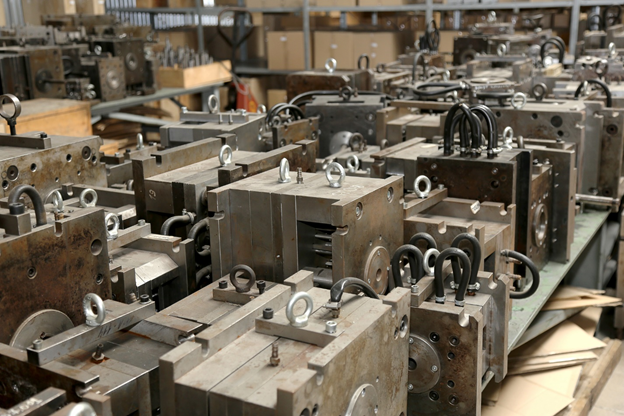What do you mean by obsolete stock?
The term obsolete means something which is no longer useful. Similarly, obsolete stock refers to the inventory that has lost its original value either because it has become old and has been in use for a long time. It has become outdated and better options are available to replace it. It also refers to the stock which is no longer in demand in the market because it has reached the end of its life cycle.
Summary
- The term obsolete means something which is no longer useful.
- Obsolete stock refers to the inventory which has lost its original value either because it has become old or because it has become outdated, and better options are available to replace it.
- Timely recognition of the fall in the value of a particular stock is important for a business operation. The company should write off the obsolete stock in its financial statements as per the Generally Accepted Accounting Principles (GAAP).
Frequently Asked Questions
What does obsolete stock mean for a company, and how are obsolete stocks calculated?
Having large quantities of obsolete stock in a company's warehouses is not considered a positive sign. Usually, those companies or businesses are left with large quantities of obsolete stock which have either failed to understand a decline in demand or ignored the company's stock replenishment policies for a long time. Therefore, it is good to eliminate obsolete stock. If this is not done, these stocks are mentioned in a company's balance sheet as working capital with a limited return on investment. Therefore, it is necessary to write off these stocks as otherwise they would create an illusion and be considered assets. Obsolete stock is also referred to as 'dead inventory' or 'excess inventory'.
Inventory or stock refers to the goods and materials held by a business that is ready to be sold. Stocks are assets of a business operation, as they account for a huge percentage of a company's sales revenues.
Earlier, when the technology was not developed, stocks were considered obsolete if the goods and materials were held for too long. However, with technological innovations, an increase in options available to the customers and their high expectations have changed. As of now, the life cycle of the products has become shorter, and stocks have become obsolete much faster than the earlier times.
It is a fact that when a business person fails to sell a particular good and material to the customers for a long time, it means that the value of that stock has considerably declined, and it is now of no use for the company. Therefore, timely recognition of this fall in the value of a particular stock is important for a business operation, and the company should write off the obsolete stock in its financial statements as per the Generally Accepted Accounting Principles (GAAP).

Image Source: © Alesik | Megapixl.com
A write-down is said to happen when the market value of a stock is less than the cost reported in a company's balance sheet. Write-off means completely taking the obsolete stock off the books when it has lost its value and can no longer be sold to the customers.
According to GAAP guidelines, companies are required to maintain an inventory reserve account for obsolete stocks on their balance sheet and make a payment for these stocks as they dispose of it off.
To report obsolete stocks, companies normally debit an expense account and credit a contra asset account.
When a business/company debits the expense account, it suggests that the amount spent on the stocks that have become obsolete is an expense. After that, a contra asset account is reported on a company's balance sheet. Once this is done, it decreases the total reported value of the asset account.
For accounting purpose, if the write-down for obsolete stocks is small, companies usually charge the cost of goods sold account. However, when the write-down for the obsolete inventory is large, it is preferred to charge the expense to a separate or alternate account.
Example:
For instance, XYZ calculates that it has $5,000 worth of obsolete stocks or obsolete inventory. It later finds that this stock can still be sold at $2,500 to the customers. In this way, the value of the obsolete stock has fallen from $5,000 to $ 2,500. This difference or gap indicates the value that should be mentioned in the accounting general. This value $5,000 - $ 2,500 = $2,500, will be maintained as Allowance for Obsolete Inventory. However, if the company decides to throw away the obsolete stocks, it would not get $2,500. Thus, in this case, besides writing-off the inventory, the company will also be required to take into account the additional expense of $2,500.
Discuss the impact of inventory write-down on the financial statement?
In accounting, Inventory write-down keeps a record of reduction in a stock's/inventories value, especially when it has become obsolete. In addition, during a financial year, if the goods are unfit for resale or reuse because of any physical damage caused to them or the goods are stolen—it can affect the inventory write-off.
What are the implications of the inventory write-down?
- Write-off reduces the value of the Inventory.
- In the case of accrual accounting, there are chances that the management may choose to make an inventory reserve account to compensate for the future losses because of the change in inventory valuation.
- Write-off affects the Cost of Goods Sold for a given period.
- It has a significant impact on a company's balance sheet. This is because any change in the value of stocks will ultimately affect the profitability of a business.
How can a business keep a tap on obsolete stocks?
One way to reduce obsolete stocks is by tracking the products based on their life cycle. Once a product becomes obsolete, it is next to impossible to provide you with any profitable return on investment. Therefore, it is important to carefully monitor when a product's sales begin to hit a downward trend and thereby make changes in the reordering parameters to match the demand in the market.
Further, if one finds an excess stock of certain goods, efforts must be made to accelerate the sale of the concerned goods or products before they become obsolete. Companies can avoid obsolete inventory if they have good inventory policies and better understand the consumer's behaviour and demand.

Image Source: © Auremar | Megapixl.com
Dispose of obsolete stock
Many companies are unsure what they should do with the obsolete stock, and they abstain from liquidating it right away. While there are also companies which ignore the fact that a large investment which was supposed to yield profitable income has now become an expense for the company. However, this attitude is dangerous because if the issue is not addressed on time, the number of obsolete stocks will increase, and the company will have to spend a large amount of money associated with storage. At times storage costs can be extremely high and thus can put an extra burden on the company. It is, therefore, necessary to get obsolete stocks off the books.
Why do some products become obsolete?
Some of the reasons why certain products become obsolete quickly:
- Technological innovation and advancement.
- Physical damage to the product.
- They have been in use for a long time.
- A decline in overall demand for the items.
- Availability of better substitutes.
- Change in the preferences and choices of consumers.
- Increase in competition.
 Please wait processing your request...
Please wait processing your request...